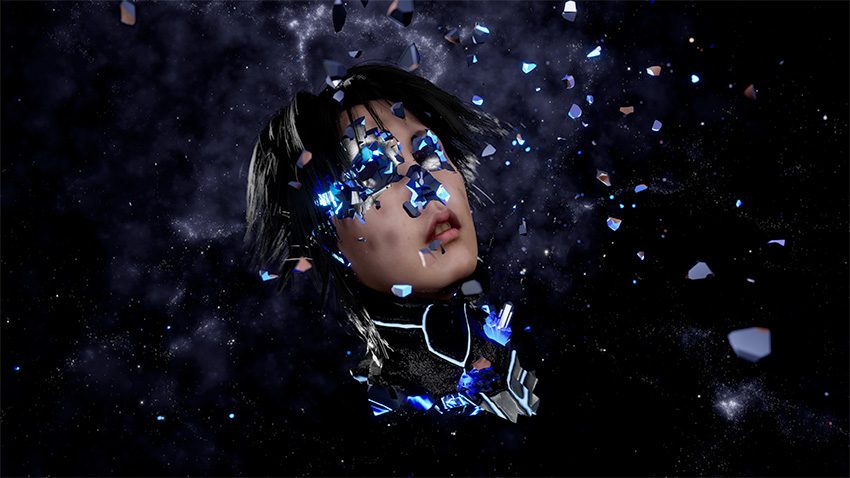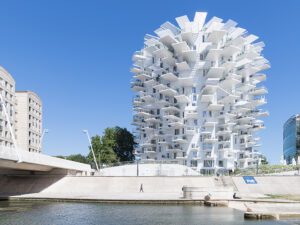Today, the worlds of video games, artificial intelligence and contemporary converge in new and unprecedented ways. Technology is advancing at breakneck speed, and artists are harnessing the power of AI, game engines and digital tools to create immersive, thought-provoking works that redefine the boundaries of creativity. Interdisciplinarity is not only transforming how art is made, but also how it is experienced. The exhibition Machine Love captures this evolution, offering a compelling glimpse into a future where digital and physical realities blur.
Since the Covid-19 pandemic, our reliance on virtual spaces has deepened, accelerating the fusion of human and machine interaction. AI-generated artworks have gained prominence, sparking debate about authorship, creativity and the role of the artist in a world increasingly dominated by algorithms. Meanwhile, video game technology has advanced beyond entertainment, serving as a powerful medium for artistic expression. These themes lie at the heart of Machine Love, which brings together cutting-edge artists working at the intersection of art, AI and gaming. Featuring pioneers like Beeple, Kate Crawford & Vladan Joler, Diemut and Jakob Kudsk Steensen, the show explores how contemporary artists engage with technology to articulate new forms of storytelling and experience.
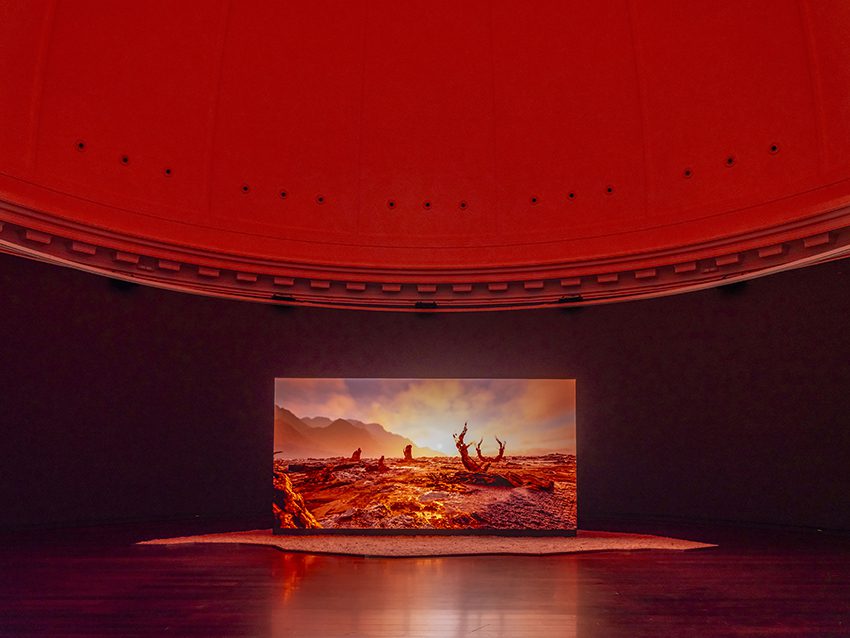
The title Machine Love challenges traditional notions of mechanisation, shifting the focus from industrial-age machinery to the digital and computational technologies that shape our 21st-century existence. Historically, the Machine Age celebrated speed, innovation and industrial progress. Today, the new machine age is defined by AI, generative algorithms, and virtual simulations, offering not just efficiency, but also creative collaboration between humans and machines. The inclusion of “Love” reflects the complex emotions we project onto technology – adoration, anxiety, fascination and even fear. It also raises a profound question: can AI and machines possess consciousness or emotion? Think Westworld and Humans.
One of the exhibition’s most striking aspects is its multidisciplinary approach. Featuring 11 individual artists and one collective, Machine Love presents works that merge contemporary art, design, gaming and AI research. HUMAN ONE (2021) by Beeple, a mesmerising three-dimensional digital artwork that interrogates the idea of the first human born in the metaverse, is a key highlight. The piece envisions an endless journey through a virtual world, reflecting on the evolving nature of identity in a digitally-mediated existence. Similarly, Sato Ryotaro’s video installation employs vast datasets of generic game characters – soldiers, children, animals – to critique the interchangeable nature of digital lives, drawing unsettling parallels with real-world crises.
Machine Love blurs the boundaries between the digital and physical realms. Artists like Lu Yang and Jakob Kudsk Steensen seamlessly integrate video game technology with real-world installations. Steensen’s The Ephemeral Lake (2024) uses 3D scans, sound recordings and digital simulations to recreate a shifting, hyperreal landscape inspired by Death Valley’s ecosystem. The installation underscores the fragility of nature and the impact of human intervention, offering a meditation on time, decay and regeneration.
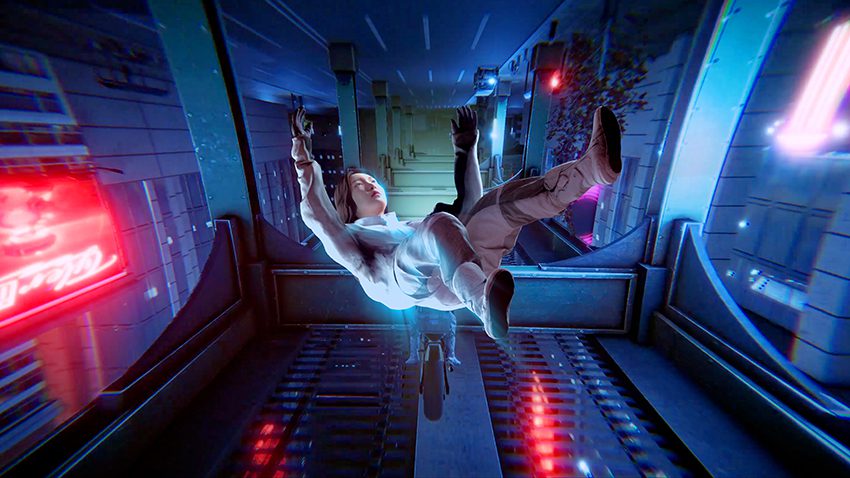
Anicka Yi and Adrián Villar Rojas employ technology to challenge perceptions of reality. Yi’s work draws on biological and ecological research, training AI to generate new environments based on historical references. Rojas, on the other hand, employs custom-developed software to simulate Earth’s past, present and speculative future, crafting landscapes that defy time and space. These projects reveal how AI and digital tools are extending artistic possibilities and reframing our understanding of history and nature.
The exhibition is not just about observation – it invites participation. The Indie Game Arcade, curated by media artist Taniguchi Akihiko, features a selection of independent games that explore themes of self and otherness. Interactive works like Delivery Dancer’s Sphere by Kim Ayoung allow visitors to engage with AI-driven narratives, while Diemut’s El Turco / Living Theater (2024) stages dialogues between AI personalities and audience members, interrogating the nature of consciousness and machine intelligence. Kate Crawford and Vladan Joler’s Calculating Empires: A Genealogy of Technology and Power Since 1500 offers a sweeping historical perspective, tracing the entanglement of technology and power across five centuries. Their work contextualises AI’s rise within a broader narrative of colonialism, industrialisation and global transformation, urging reflection on the ethics of technological progress.
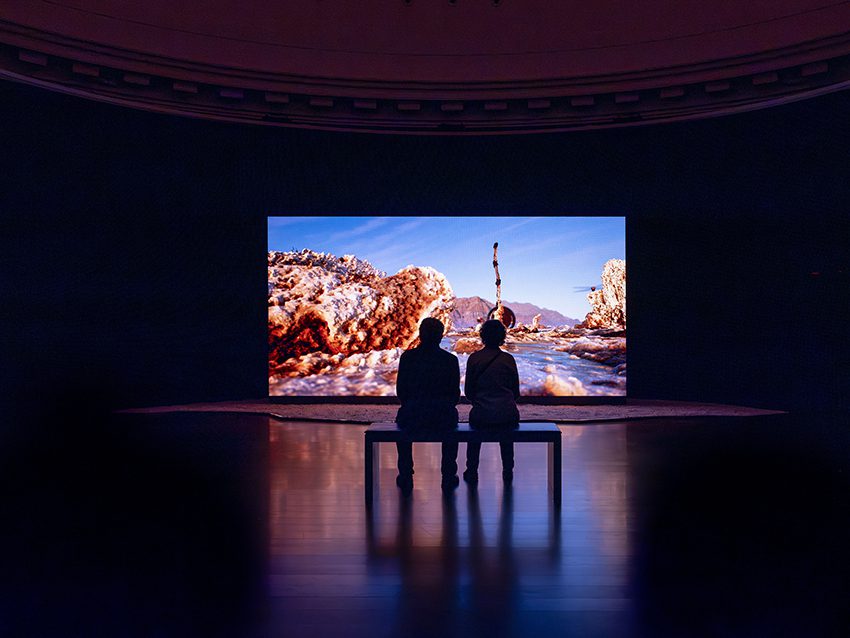
AI is redefining the artistic landscape, so how does Machine Love present a forward-thinking vision of creativity in the digital age? It showcases how artists are not merely adapting to technological change but actively shaping its trajectory. The works on display reveal a deep engagement with critical issues – environmental crisis, identity, ethics and the impact of AI on human agency. By embracing the potential of machines while questioning their implications, the exhibition does not present AI as a threat but as a collaborator. The artists featured are pioneers in a new frontier of artistic expression, proving that technology, far from diminishing human creativity, can amplify and expand it in unexpected ways.
Ultimately, Machine Love is more than just an exhibition – it is a dialogue between past and future, humanity and machine, digital and tangible. It invites us to imagine a world where these dichotomies dissolve, forging a new aesthetic and philosophical paradigm. It celebrates the present state of AI-driven art and envisions its boundless potential. For those eager to witness the cutting edge of contemporary art, Machine Love affirms the power of creativity in shaping an uncertain but exhilarating future.
Machine Love continues at Mori Art Museum, Tokyo, until 8 June.
Visit mori.art.museum for more information.
Words: Anna Muller
Image Credits:
1. Lu Yang, DOKU the Self, (2022).
2. Jakob Kudsk Steensen, The Ephemeral Lake, (2024). Commission: Hamburger Kunsthalle, Hamburg, Germany. Installation view: The Ephemeral Lake, Hamburger Kunsthalle, 2024. Photo: Christoph Irrgang.
3. Kim Ayoung, Delivery Dancer’s Sphere, (2022).
4.Jakob Kudsk Steensen, The Ephemeral Lake, (2024). Commission: Hamburger Kunsthalle, Hamburg, Germany. Installation view: The Ephemeral Lake, Hamburger Kunsthalle, 2024. Photo: Altay Tuz.


